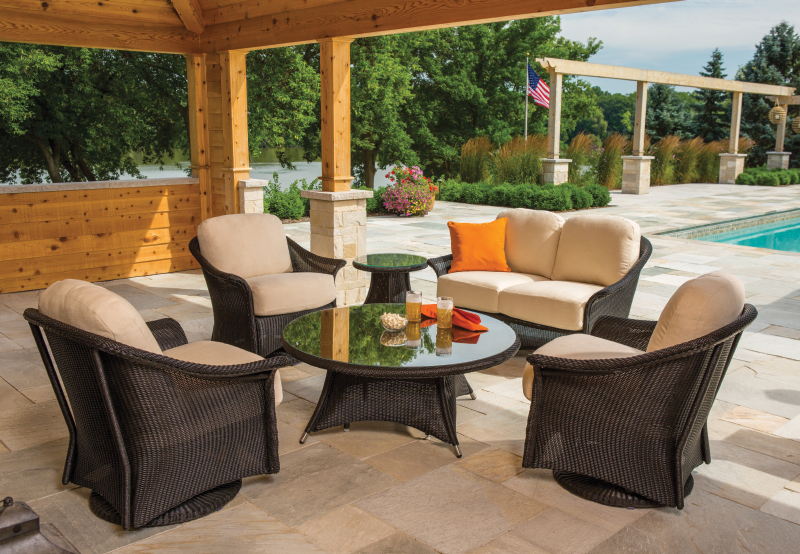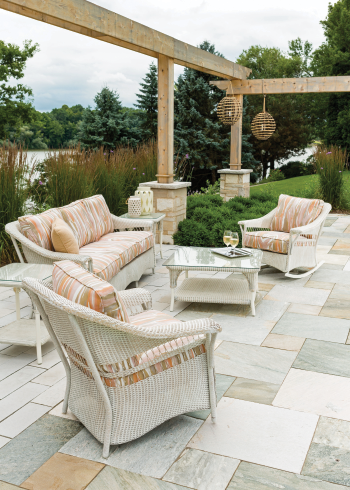
IT WAS THE HEIGHT of the Victorian era — those romanticized turn-of-the-century days when sipping a cold beverage on a graceful porch was not just a pastime but an art — when inventor Marshall B. Lloyd developed a revolutionary process for loom-weaving wicker.
See a Victorian baby buggy in an antique store and chances are it was crafted on his Lloyd Loom. Ditto many other classic pieces of furniture, with the company’s designs today found on the cover of Kenny Chesney’s album “Songs from an Old Blue Chair,” inside New York’s Waldorf Astoria and at Yellowstone’s Grand Hotel, atop Mackinac Island carriages and in the furniture collections of boutique shops around the nation.
“We tell people, ‘Treat it like an automobile. One that’s left outside has to be washed more than in a carport; one in a carport, more than in a garage.’”
— Warren Juliano
Lloyd, founder of what today is the Lloyd Flanders furniture company, first patented a machine for weaving table mats, then for weaving wire spring mattresses and wire wheels for baby carriages. They were all manufactured in Menominee, Michigan, where he also invented the time-honored method of weaving wicker the company still uses today.

Over the years, the company crafted its loom-woven furniture for such tony recipients as U.S. presidents for use on various White House verandas, says Warren Juliano, vice president of sales. But today’s collections are aimed to be passed down through generations of ordinary families — the company’s main target market.
“We tell people that, while it’s a significant investment, there is pride in ownership, history and heritage,” Juliano says. “When you buy quality furniture, it’s not expensive. It’s priceless. It’ll last you for generations. It’s generational furniture.”
One thing that sets the brand apart is its heritage. The Menominee plant is still construction central, and many of today’s employees have parents or grandparents who also worked there.
Handcrafted is not a loosely used word when referring to the process. One lounge chair is typically touched by a dozen employees during the weeklong process it takes to make it, Juliano says.
Weatherproofing technology is a notable modern-day advancement.
“It absolutely can be left completely outside, and it comes with a standard three-year warranty against any elements,” he says. “We tell people, ‘Treat it like an automobile. One that’s left outside has to be washed more than in a carport; one in a carport, more than in a garage.’ We’re the only voice out there selling the technology and loom material, and we put it out in extreme confidence.”

The timeless collection called Reflections is especially popular in Michigan for the way it brings home that Up North feeling, says David Pobuda, manager of Edwards Home Furniture of Suttons Bay. Customers appreciate the wide range of color and fabric selections and its long lifespan — the fact it’s truly furniture that can be passed down.
The washed finishes help it resemble something your grandmother may have owned. And it’s “what people think of when they think of wicker,” Pobuda says. “It’s what a lot of people have in mind without even realizing it.”
Designers are currently experimenting with the mixing of media, pairing teak accent tables with woven wicker, for example. But even as the brand evolves, its appeal remains the way it’s handcrafted in the original factory location, in much the same method Lloyd developed more than a century ago in Michigan’s Upper Peninsula, Juliano says.
“No one ever comes in who doesn’t leave with an appreciation for the process and hand-craftsmanship that goes into what we do,” he says.







Facebook Comments